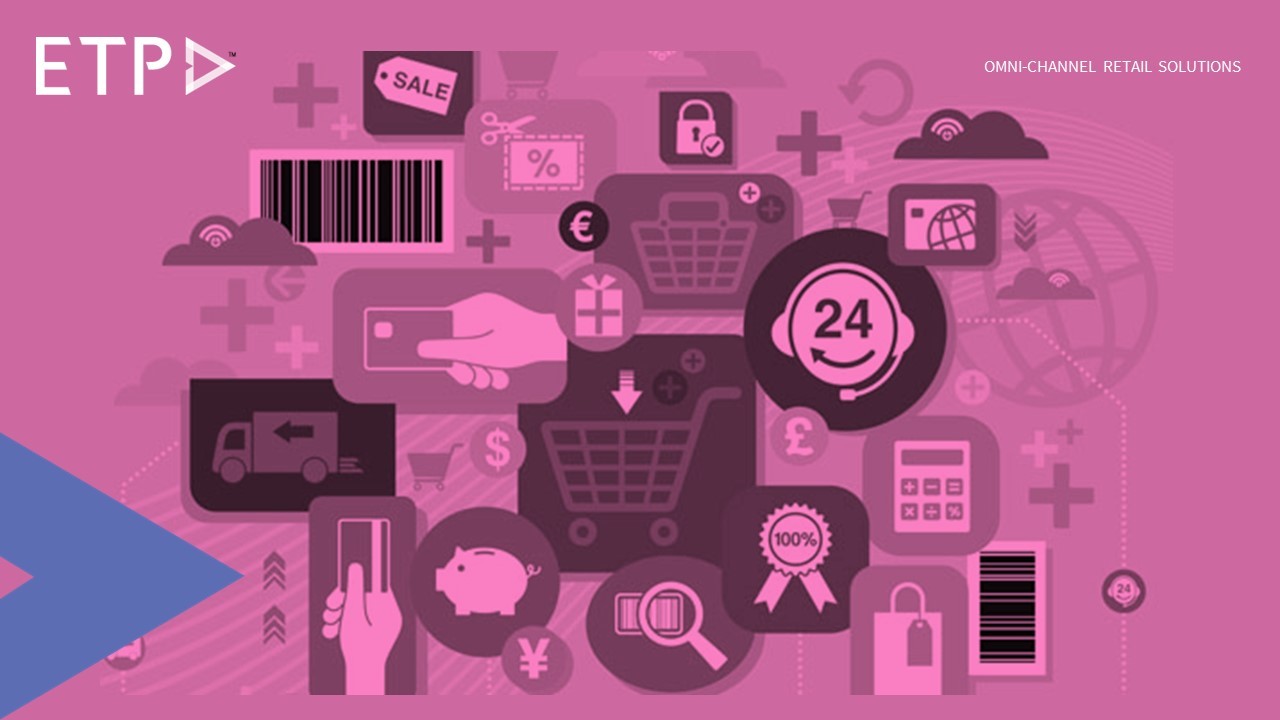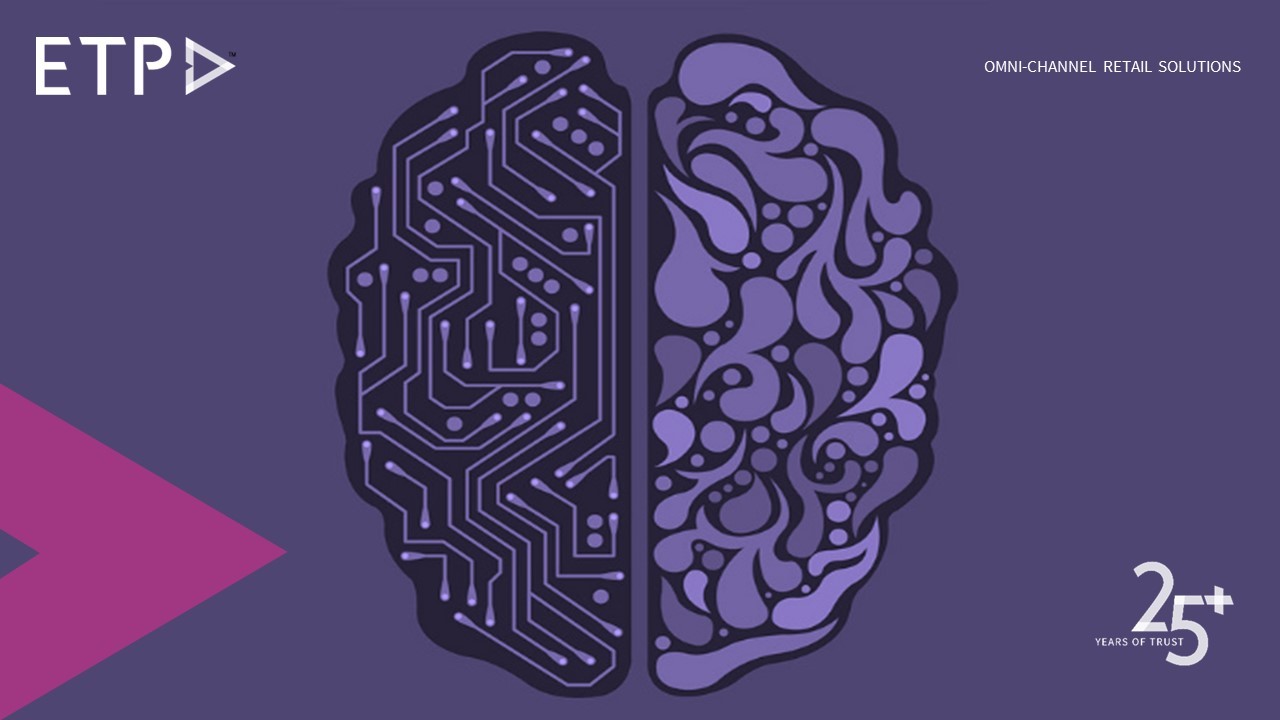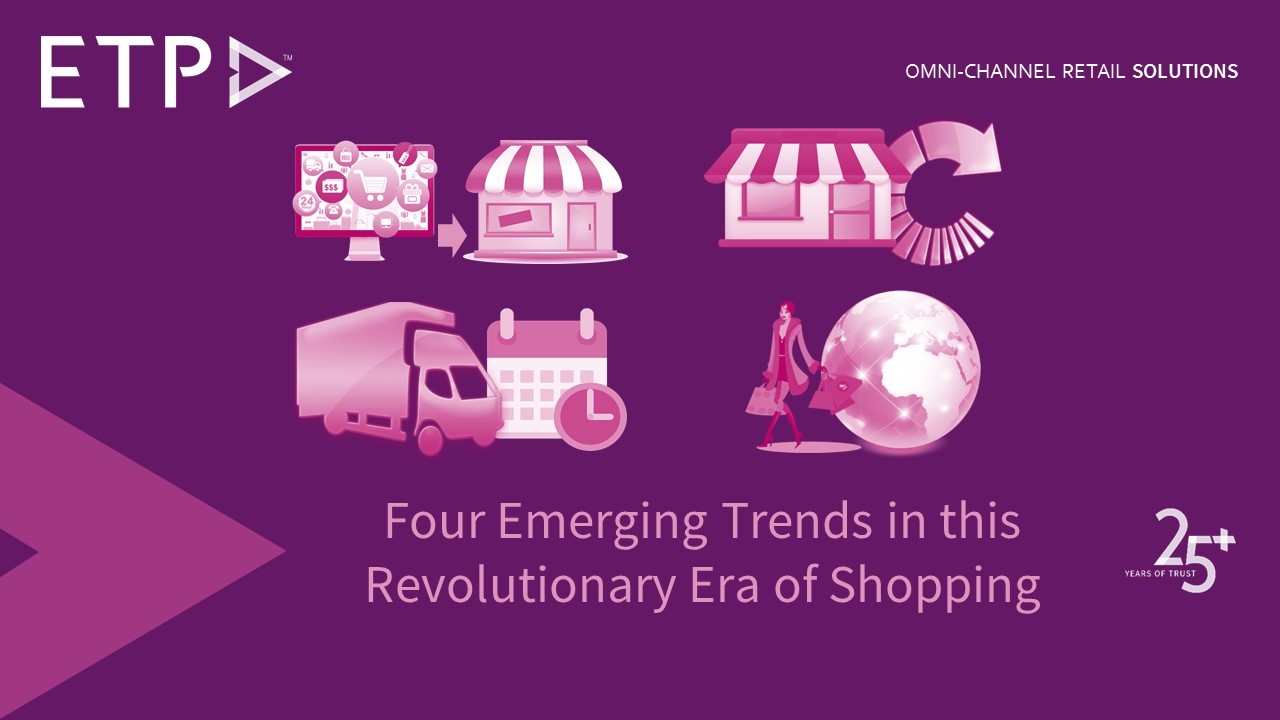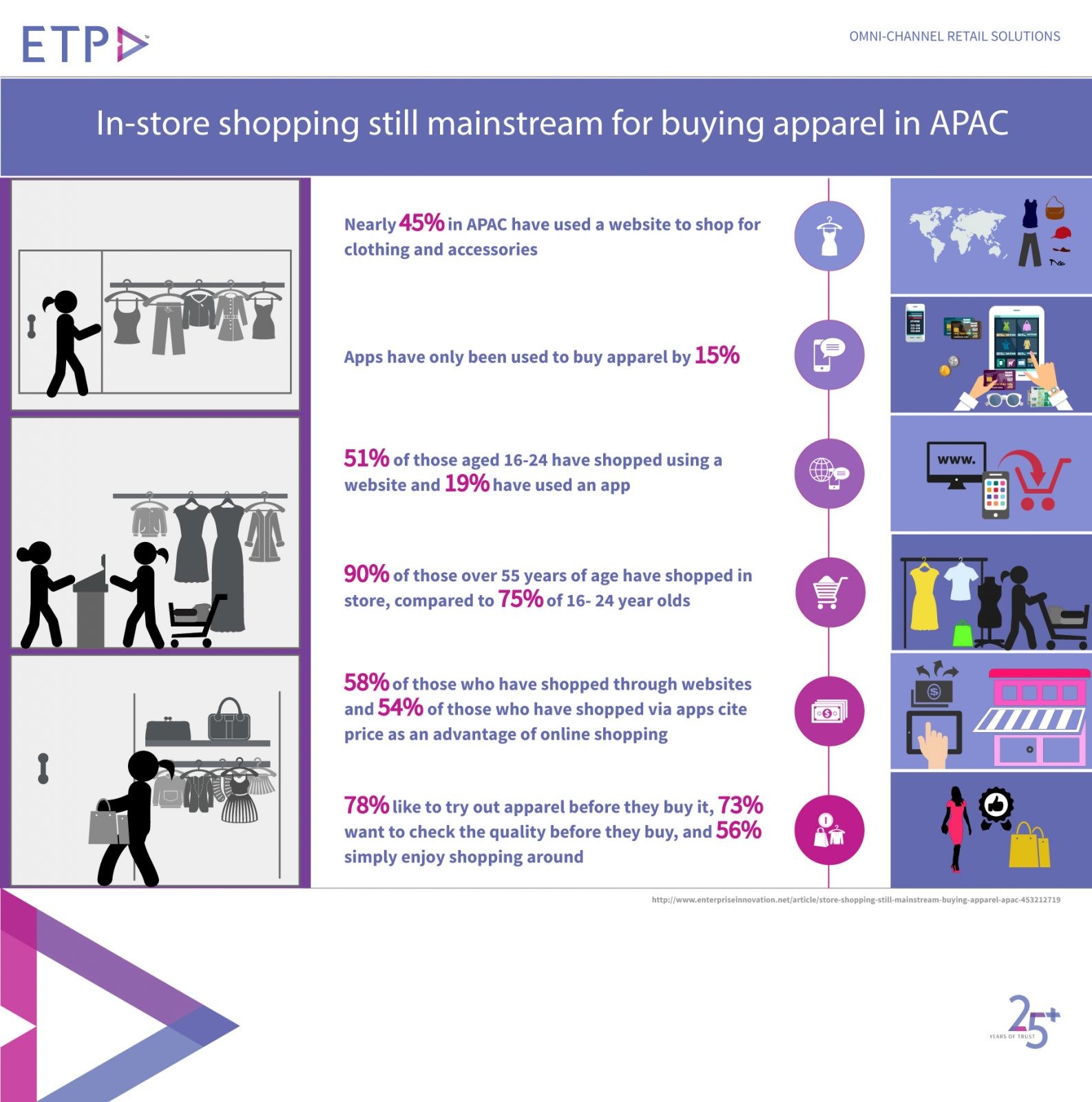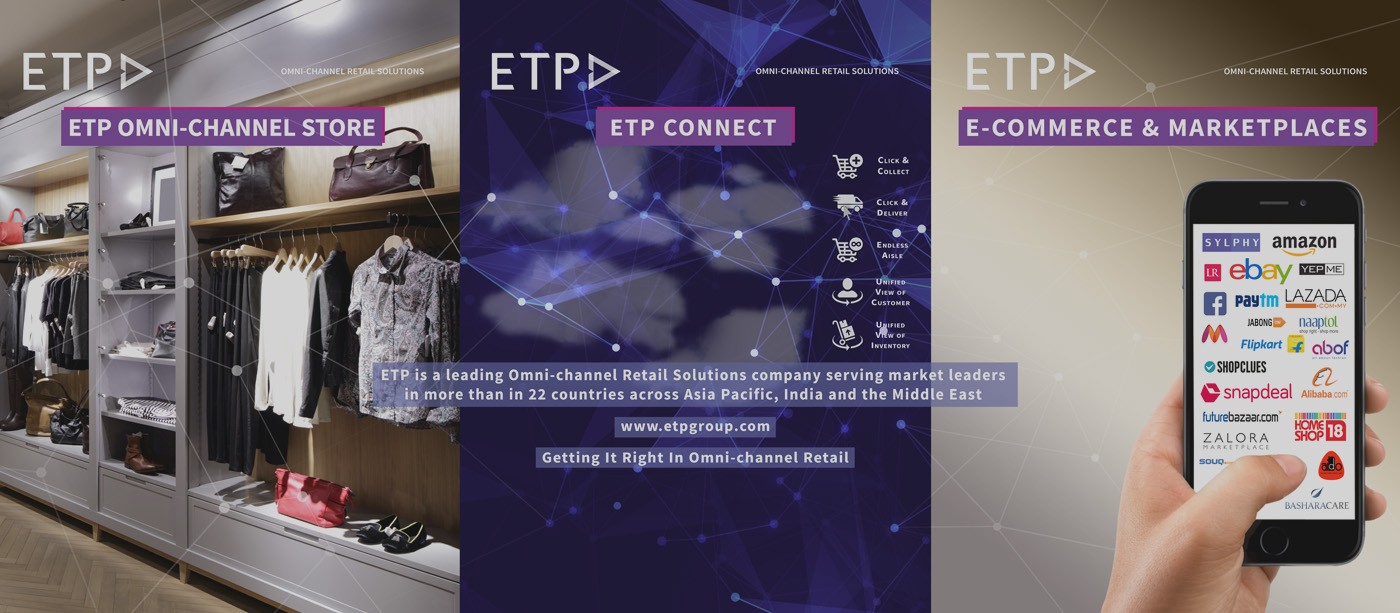
RAI is hosting the Retail Technology Conclave (ReTechCon) on 14-15 June 2017, India’s largest gathering of retail leaders and retail service providers. The platform is to bring together industry professionals, experts and service providers together for discussing the latest in technology and deliberating on how to best use technology for the benefit of the business and industry.
ETP is the Omni-channel Technology Partner at the Retail Technology Conclave (ReTechCon) 2017. ETP is a leading Omni-Channel Retail Solutions provider across Asia Pacific, India and the Middle East. ETP V5 software is used to serve customers across 22 countries and thousands of stores for over 300 brands. ETP is enabling brick and mortar retailers to embrace unified commerce and drive their brands and customer relationships in a seamless manner. ETP V5 Omni-channel Retail Solutions enable you to deliver a unified omni-channel experience with features such as Click and Collect, Click and Deliver, Endless Aisle, and a holistic view of the inventory and of the customer. This is done using real-time integration of ETP’s POS, CRM and Promotions engine with webstores and marketplaces using ETP Connect’s secured web services framework, which has the ability to see and manage order flows.
At the event Mr. Rajkumar Jagasia, Executive Director, ETP Group will co-panel the session ‘Creating Value the Phygital Way’. Mr. Neev Ahuja, Country Manager – India, ETP Group, will speak about ‘Omni-channel and the New Generation of Customers’. He will also throw light on how ETP V5 with its GST pack can help retailers manage extensive business processes.
Do visit us at the ETP Pavilion at ReTechCon 2017 to know more about how ETP can help you transform your business.

